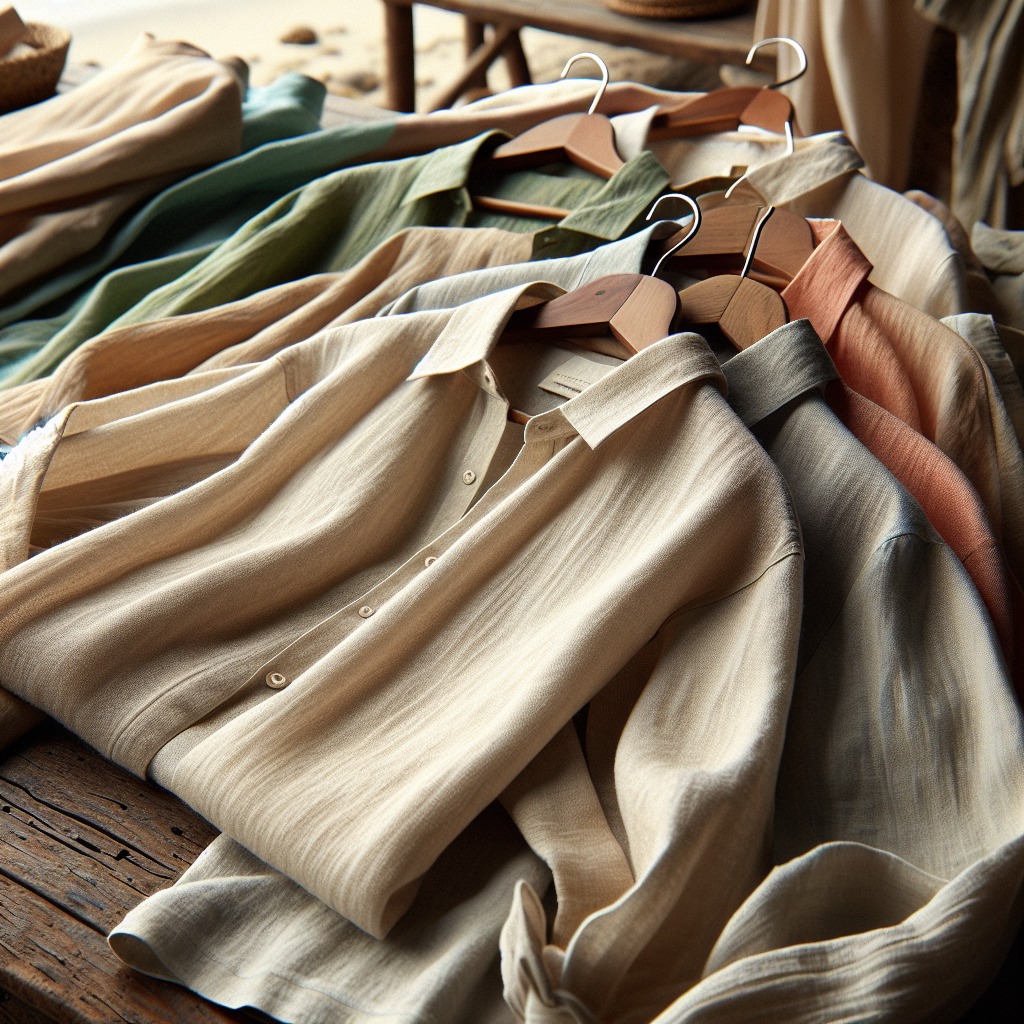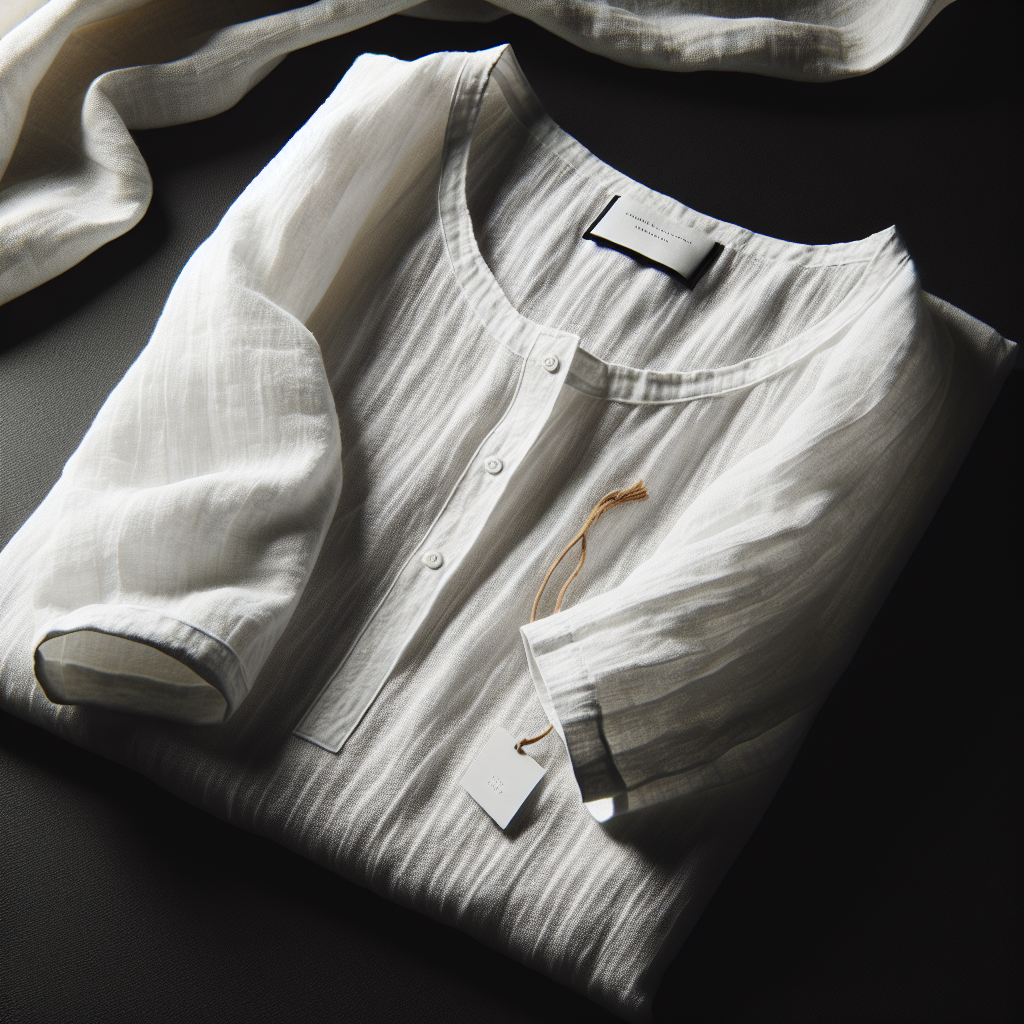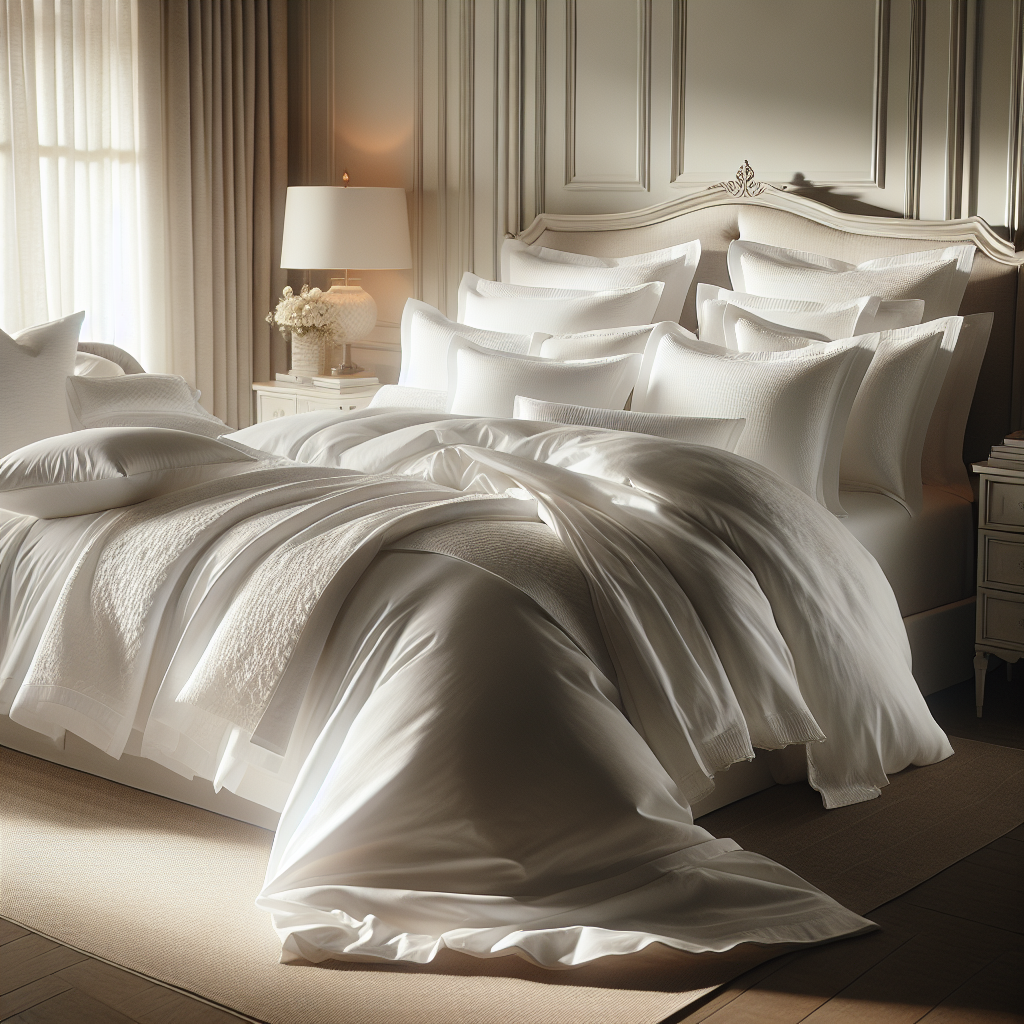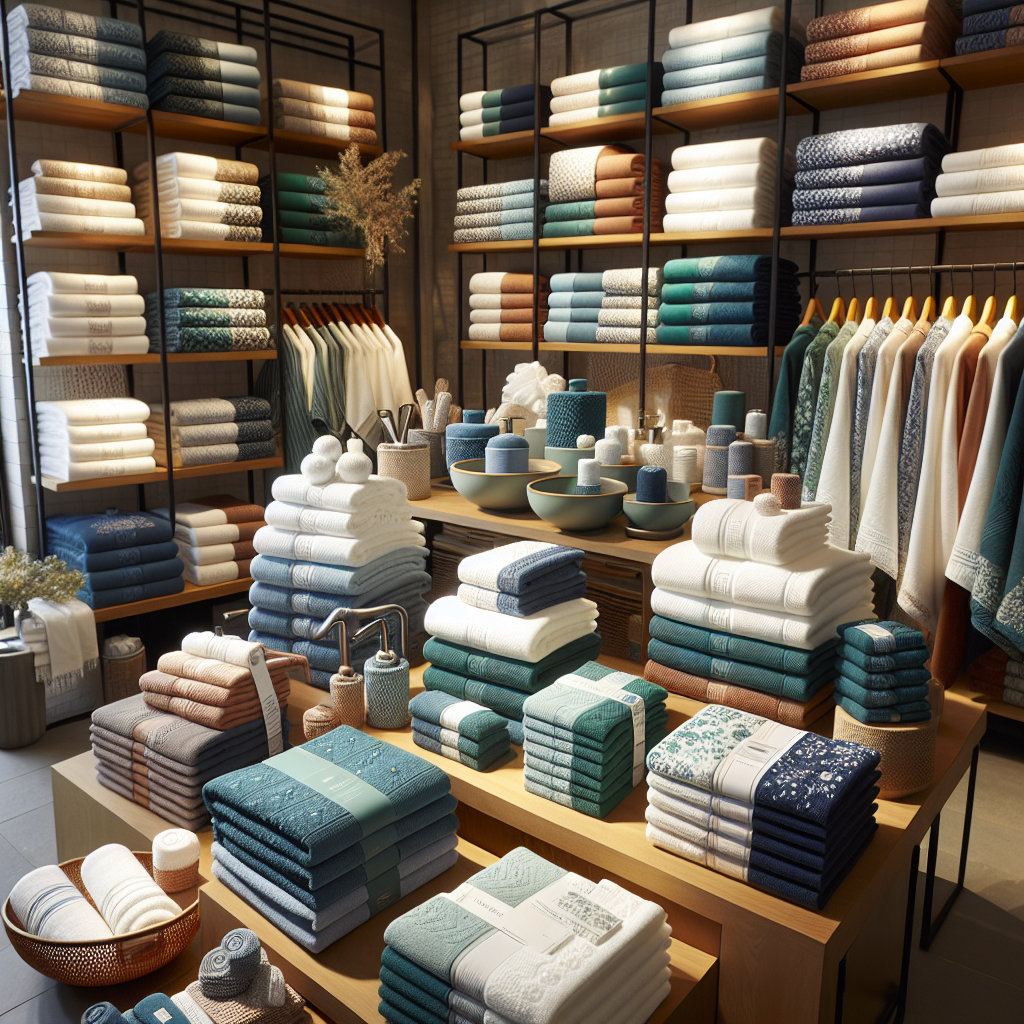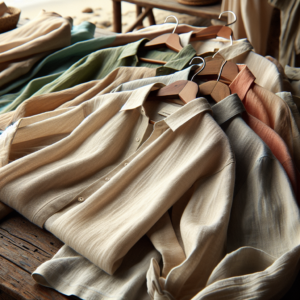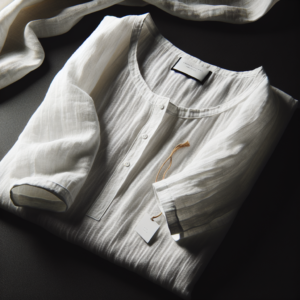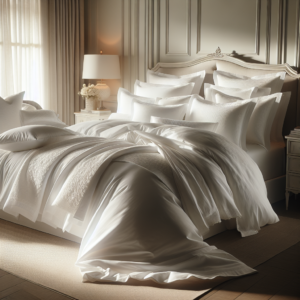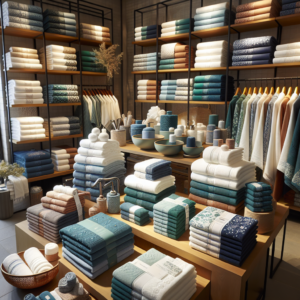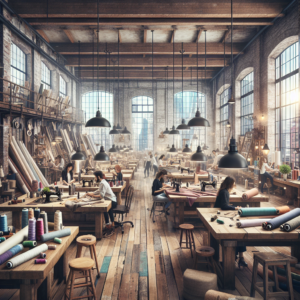The History of Linen Production in Ireland: From Flax to Fabric
Linen has been a staple fabric in Ireland for centuries, with a rich history that dates back to the early days of the country. The production of linen in Ireland has played a significant role in the economy and culture of the country, making it a vital part of Irish heritage. In this article, we will take a closer look at the history of linen production in Ireland, from the cultivation of flax to the creation of beautiful linen fabric.
The story of linen in Ireland begins with the cultivation of flax, a plant that has been grown in the country since ancient times. Flax was first introduced to Ireland by the Celts, who used it to make clothing and other household items. However, it wasn’t until the 17th century that the production of linen became a major industry in Ireland.
During this time, the English government encouraged the growth of the linen industry in Ireland, as it was seen as a way to reduce the country’s dependence on imported fabrics. The Irish climate and soil were ideal for growing flax, and the government provided incentives for farmers to grow the crop. As a result, the production of linen flourished, and Ireland became one of the leading producers of linen in Europe.
The process of turning flax into linen fabric was a labor-intensive one, involving several stages. The first step was to plant the flax seeds in the spring, and then harvest the plants in the summer. The flax was then retted, a process that involved soaking the plants in water to loosen the fibers. After retting, the flax was dried and then broken, which separated the fibers from the woody stem.
The next step was to spin the flax fibers into yarn, which was done using a spinning wheel. This was a skilled job, and many women in Ireland became expert spinners, producing high-quality yarn that was in demand all over Europe. The yarn was then woven into linen fabric on handlooms, a process that required great skill and precision.
The quality of Irish linen was renowned throughout Europe, and it became a highly sought-after fabric. The linen industry in Ireland grew rapidly, with many families involved in the production of linen. The industry also provided employment for women, who were able to earn a living by spinning and weaving linen.
In the 19th century, the linen industry in Ireland faced tough competition from cotton, which was cheaper and easier to produce. However, Irish linen remained popular due to its superior quality, and the industry continued to thrive. In fact, during the American Civil War, the demand for Irish linen increased as it was used to make bandages for wounded soldiers.
Today, the production of linen in Ireland has evolved with the use of modern technology and machinery. However, the traditional methods of growing flax and spinning and weaving linen are still practiced by some small-scale producers. Irish linen is still highly regarded for its quality and is used to make a variety of products, from clothing to home furnishings.
In conclusion, the history of linen production in Ireland is a testament to the country’s rich heritage and the hard work and skill of its people. From the cultivation of flax to the creation of beautiful linen fabric, the Irish linen industry has played a significant role in shaping the country’s economy and culture. And even today, Irish linen continues to be a symbol of quality and craftsmanship, making it a valuable part of Ireland’s past, present, and future.
Sustainable Practices in the Irish Linen Industry: A Closer Look

The Irish linen industry has a long and rich history, dating back to the 17th century. Known for its high-quality and durable fabric, Irish linen has been a staple in the textile industry for centuries. However, with the rise of fast fashion and the increasing demand for cheap and disposable clothing, the linen industry has faced challenges in maintaining its traditional practices while also adapting to modern consumer needs.
In recent years, there has been a growing concern for sustainable practices in the fashion industry, and the Irish linen industry is no exception. As consumers become more conscious of the environmental impact of their purchases, the demand for sustainable and ethically-made products has increased. This has led to a closer look at the practices of the Irish linen industry and its efforts towards sustainability.
One of the key sustainable practices in the Irish linen industry is the use of natural and biodegradable materials. Linen is made from the flax plant, which is a renewable resource that requires minimal water and pesticides to grow. This makes it a more environmentally friendly option compared to other fabrics such as cotton, which is known to be a water-intensive crop. Additionally, linen is biodegradable, meaning it can easily decompose without leaving harmful chemicals in the environment.
Another important aspect of sustainability in the Irish linen industry is the production process. Traditional methods of linen production involve hand-harvesting and hand-weaving, which require skilled labor and a slower production pace. While this may seem inefficient, it actually contributes to the sustainability of the industry. By using traditional methods, the industry supports local communities and preserves traditional skills and techniques. It also reduces the carbon footprint of the industry by minimizing the use of machinery and energy.
In recent years, there has been a push towards more sustainable and ethical practices in the fashion industry, and the Irish linen industry has responded by implementing certifications and standards. One such certification is the Global Organic Textile Standard (GOTS), which ensures that the entire production process, from harvesting to manufacturing, meets strict environmental and social criteria. This certification is becoming increasingly important to consumers who want to make more conscious and sustainable choices.
In addition to certifications, the Irish linen industry has also implemented initiatives to reduce waste and promote circularity. One example is the use of leftover flax fibers, known as tow, to create other products such as paper and insulation. This not only reduces waste but also creates new revenue streams for the industry. Some companies have also started offering recycling programs for old linen products, encouraging consumers to dispose of their items responsibly.
Furthermore, the Irish linen industry has also made efforts towards reducing its carbon footprint. This includes using renewable energy sources, such as wind and solar power, in the production process. Some companies have also implemented carbon offsetting programs to neutralize their carbon emissions. These efforts not only contribute to the sustainability of the industry but also help to combat climate change.
In conclusion, the Irish linen industry has made significant strides towards sustainability in recent years. From using natural and biodegradable materials to implementing certifications and promoting circularity, the industry is taking steps towards a more environmentally friendly and ethical future. As consumers continue to demand sustainable and ethically-made products, it is crucial for the Irish linen industry to continue its efforts towards sustainability and set an example for the rest of the fashion industry.
Exploring the Versatility of Linen: Innovative Uses in Modern Irish Design
Linen has been a staple fabric in Irish culture for centuries, with its roots dating back to the ancient Celts. Known for its durability, breathability, and luxurious feel, linen has been a popular choice for clothing, home decor, and even currency in Ireland. However, in recent years, this versatile fabric has been making a comeback in the world of modern Irish design, with innovative uses that showcase its adaptability and sustainability.
One of the most notable uses of linen in modern Irish design is in the fashion industry. While traditionally used for clothing such as the iconic Irish linen shirt, designers have been pushing the boundaries and incorporating linen into high fashion pieces. From linen dresses to suits, this fabric adds a touch of elegance and sophistication to any outfit. What sets linen apart from other fabrics is its ability to be both lightweight and durable, making it perfect for creating comfortable yet stylish pieces.
But it’s not just in fashion that linen is making a statement. In recent years, Irish designers have been incorporating linen into home decor, showcasing its versatility in interior design. Linen curtains, bedding, and tablecloths have become popular choices for adding a touch of luxury to any home. The natural texture and earthy tones of linen add a rustic yet chic element to any room. And with its durability, linen home decor pieces can withstand the test of time, making it a sustainable choice for those looking to reduce their environmental impact.
In addition to its aesthetic appeal, linen also has practical uses in modern Irish design. One such example is in the production of eco-friendly packaging. With the growing concern for the environment, many businesses are turning to sustainable alternatives for packaging their products. Linen, being a natural and biodegradable material, has become a popular choice for packaging items such as cosmetics, food, and even luxury items like jewelry. Not only does it add a touch of elegance to the packaging, but it also aligns with the values of eco-conscious consumers.
Another innovative use of linen in modern Irish design is in the production of furniture. While traditionally used for upholstery, designers have been experimenting with using linen as the main material for furniture pieces. The result is stunning, with linen sofas, chairs, and even bed frames becoming popular choices for those looking for a unique and sustainable addition to their home. Linen’s durability and breathability make it a practical choice for furniture, and its natural texture adds a touch of warmth and comfort to any space.
But it’s not just in the fashion and home decor industries that linen is making waves. Irish designers have also been incorporating this versatile fabric into their artwork. From paintings on linen canvas to sculptures made from linen fibers, artists are finding new and creative ways to use this traditional fabric in their work. The natural texture and earthy tones of linen add a unique element to these pieces, making them stand out in the art world.
In conclusion, the versatility of linen in modern Irish design is truly remarkable. From fashion to home decor, packaging to furniture, and even in the art world, this traditional fabric has found new and innovative uses. Its durability, sustainability, and aesthetic appeal make it a popular choice for designers and consumers alike. As the world continues to move towards more sustainable and eco-friendly options, it’s no surprise that linen, with its rich history and adaptability, is at the forefront of modern Irish design.

